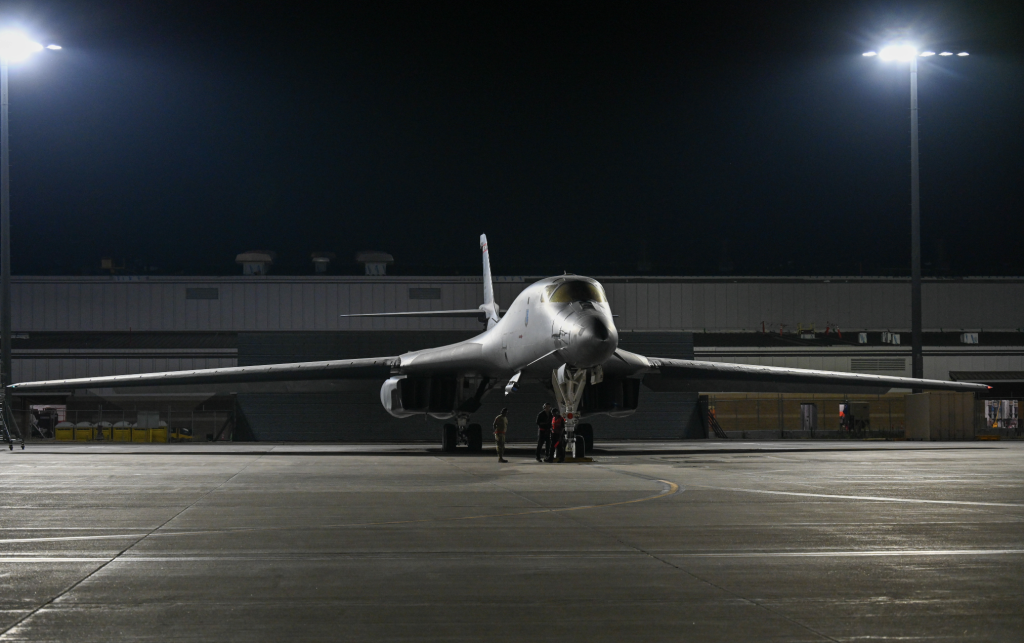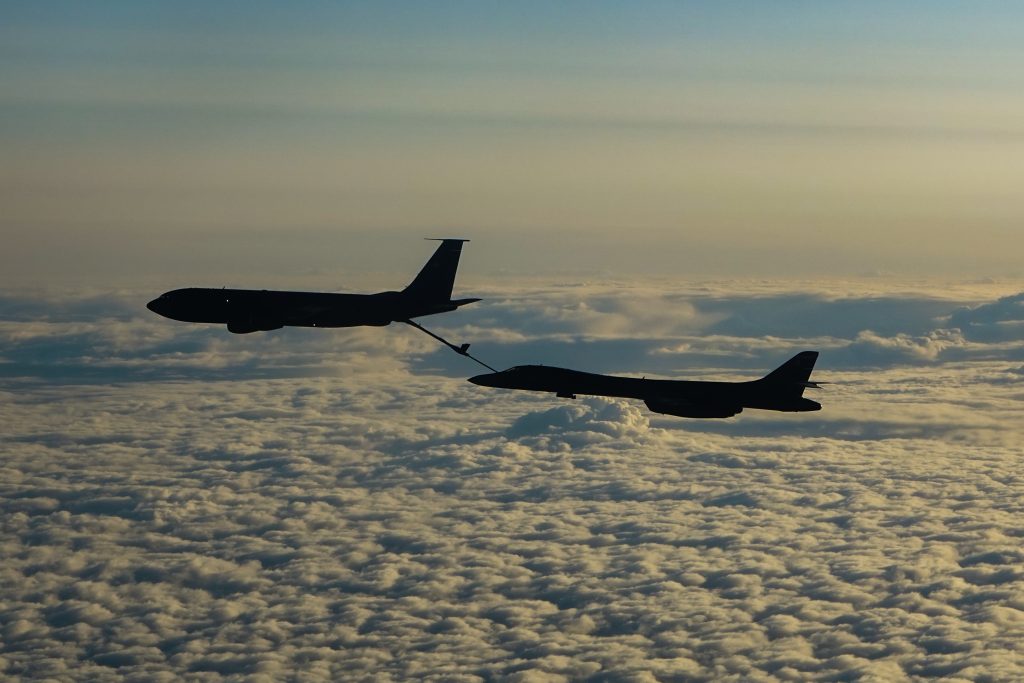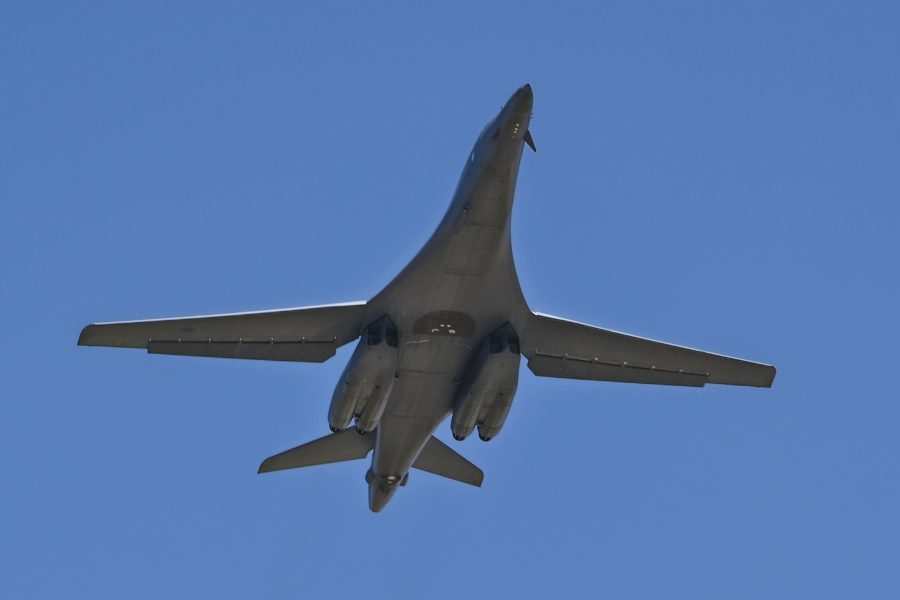Two B-1 Lancers crossed the Pacific on Aug. 1 and 2 to join Japanese fighters in a tactical mission aimed to “deter adversaries” in the airspace between South Korea and Japan.
The long-range bombers were joined by two F-16s from the 35th Fighter Squadron and four F-15s from the Japan Air Self-Defense Force for a one-day training event Aug 2. Capt. Rachel Buitrago, a spokesperson for the 7th Air Force, confirmed the bombers were from the 34th Bomb Squadron at Ellsworth Air Force Base, S.D.
“Launching missions like these from Ellsworth validates our unique capability to hold any target at risk, anywhere on the globe, at a moment’s notice,” Lt. Col. Robert Wasil, 34th Bomb Squadron commander, in a release. “Most importantly, it reassures our Allies and partners while forcing our potential adversaries to reconsider their actions.”

The bombers were refueled by a KC-135 Stratotanker en route to their Indo-Pacific mission on Aug 1. The Lancers returned to South Dakota by the next day, the squadron’s spokesperson told Air & Space Forces Magazine.
“Rapid deployment and long-range strike are two critical capabilities the B-1 provides to combatant commanders,” said Wasil.
The release stated that the B-1 bombers’ mission was aimed at demonstrating the crew’s readiness to “employ lethal capabilities” and maintaining an operation posture across the globe.
“This bilateral training with our Japanese partners allows our aircrew members to strengthen our interoperability in a wide range of capabilities, including air-to-air combat, air-to-air refueling, air-to-ground strikes, and command and control,” Lt. Col. Sean Murphy, 35th Fighter Squadron commander, said in a release. “By training together, both air forces learn how to effectively coordinate with each other and manage complex operations to achieve our strategic objectives in the region.”
The “complex and realistic training” with the bombers also reinforced the two nations’ ability to cooperate and respond in a joint way. Just last week, the Pentagon announced plans to reorganize U.S. Forces Japan as a joint force headquarters under U.S. Indo-Pacific Command to better coordinate security activities in and around Japan.
“One of the most valuable resources we have is the ability to train on advanced tactics, techniques, and procedures, capitalizing on the strengths of the combined force to meet the demands of the operating environment,” said Col. Andreas Ziegler, director of 7th Air Force Operations and Plans.

American bombers have been a regular presence in the Indo-Pacific this year through drills and exercises with regional partners. In June, a B-1 bomber participated in a one-day drill with South Korean F-15Ks, releasing live 500-pound GBU-38 Joint Direct Attack Munitions (JDAMs) for the first time in seven years. In April, two B-52 Stratofortresses flew across the southwest of Kyushu Island near the East China Sea, alongside fighters from the U.S., Japan, and South Korea.
“The more we can participate in multi-lateral training… the better our readiness to defend against any adversary as a combined force,” Zieglar said.
The U.S. is also bolstering advanced fighter presence at Japan’s southwest islands, those closest to Taiwan and the South China Sea. Kadena Air Base will house 36 F-15EX aircraft, a much upgraded version of the F-15, replacing a patchwork of combat jets that has deployed there since older F-15C/D models were retired. The Pentagon is also adding four dozen F-35As to Misawa Air Base to substitute 36 F-16s, making Misawa the first foreign base in the Indo-Pacific to host the fifth-generation fighters.


